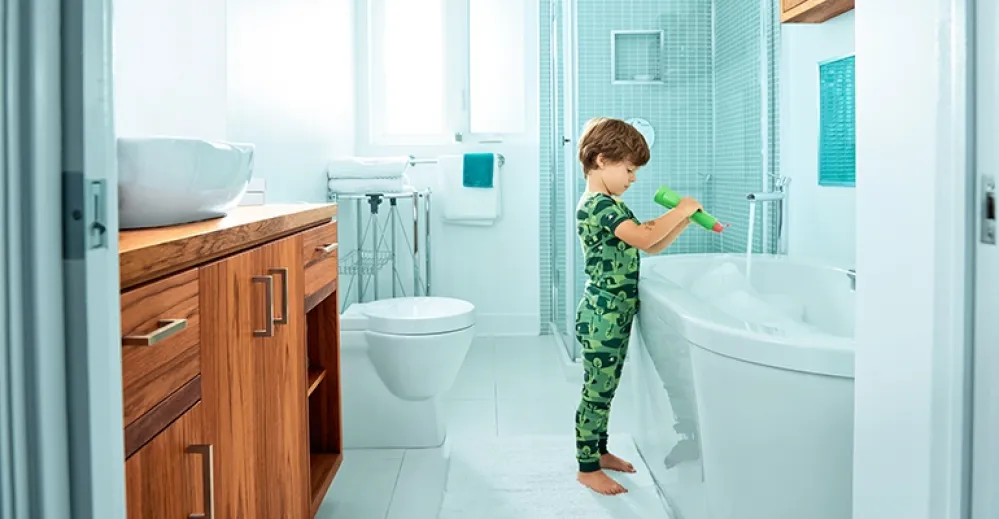Warm feet, peace of mind

Walking barefoot in our homes is one of the pleasures of summertime. The really lucky can also do it during winter, thanks to floors that are heated using natural gas. Here’s how to stay barefoot all year long.
Ceramic, cement, wood: whatever the material, heated floors diffuse comfortable and continuous heat across the entire surface.
The technology is simple: flexible pipes filled with hot water at a low temperature are installed at regular intervals beneath the floor covering in order to diffuse heat to people and objects following the principle of radiation. This is why we also talk about “radiant” or “hydronic radiant” floors.
Depending on the construction, there are several ways to install a hydronic radiant floor:
Heated floor on concrete slab – wood covering.

Heated floor on sheets of plywood – ceramic covering.

Nothing but benefits
Heated floors not only offer superior comfort, but they are also economical. In fact, the slab’s inertia makes it retain heat so well that you can set the thermostat 2 or 3°C lower than with a conventional system and obtain the same feeling of warmth. Each degree lowered saves on your energy bill. Note that each room in your home can be controlled individually.
In terms of interior design, the system is known for its discretion, since it is hidden beneath the floor covering. Occupants therefore have more freedom to furnish the space as they like.
It’s better to plan to add heated floors before launching into your architectural design or renovation project, as pipes need to be installed inside the floors and walls.
High-efficiency solutions
To maximize the performance of hydronic floors, the hot water that flows through the pipe can be produced by a condensing hot-water boiler that offers energy efficiency up to 95%.
To gain more space and as well as efficiency, opt for a combi system that produces two types of hot water with two separate exchangers.
For multi-unit housing, these solutions can be centralized to simplify maintenance, benefit from rate reductions (natural gas costs less as consumption increases), and gain space in each unit. Centralization is increasingly popular in new residential constructions, particularly when the units have small square footage.

Whichever solution you choose, it is recommended to work with an Énergir Certified Natural Gas Partner who will adhere to the highest standards and applicable best practices. This partner can also recommend grants that Énergir offers to its new customers and to its existing customers.
With the solutions and expertise available in today’s market, it’s hard to find an exuse not to give yourself the ultimate in comfort for your feet!